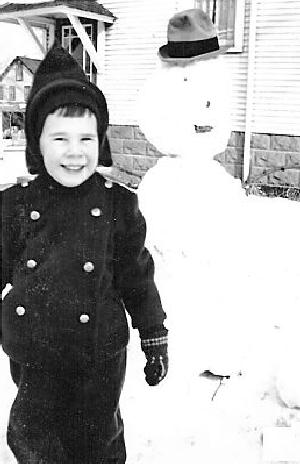
Figure 1.--We notice all sorts of snow suits for younger children in the early-20th century. This American boy wears a snowsuit, probably in the early-1940s. |

|
Seasonality is an important factor in clothing, especially in countries like the United States located in temperate areas subject to significant annual seasonal weather changes. Americans have to be prepared for both hot summer weather and cold, snowy winters and all the various intermedite seasonal changes. This has varied over time. Boys in the 19th century unless from wealthy families did not tend to have large wardbrobes. Thus seaonal clothing was more limited. Warm clothing for winter was a necesity. Sweaters, coats, gloves, hats, and thermals were necessary, especially in the northern states. Lighter-weight clothing for summer was comfortable, but not nearly as essential as cold weather clothing for winter. As the 19th century unfolded and American became affluent, we find boys acquiring larger wardrobes with more seasonal garments. Of course seasonal wardrobes became even extensive in the 20th century. In particular, summerwear became much more important. And rainwear was developed and became important items.
Lighter-weight clothing for summer was comfortable, but not nearly as essential as cold weather clothing for winter. As the 19th century unfolded and American became affluent, we find boys acquiring larger wardrobes with more seasonal garments. Of course seasonal wardrobes became even extensive in the 20th century. In particular, summerwear became much more important. And rainwear was developed and became important items. Here there were regionasl differencesd. Light-weight clothing was more important in the South where winters were shorter and milder. We note light-weight clothing in the 19th century, but many boys had limited wardrobes that did not include seaonal garments. Boys in the north in particulasr might not have light-weight clothes. Children might adjust to the weather by going barefoot which meant not wearing long stockings. They might also despense with jackets and vests just wear a blouse during the summer. Increasing prosperity meant that summer wardrobes became much more extensive in the 20th century.
Inclement weather clothing became increasingly impotant in America during the 19th century. These heavy garments tended to be relatively expensive items. Many parents could not afford them before the 19th century. The growing wealth resulting from the Industrial Revolution increased the number of parents that could afford to buy both cold weather garments and rainwear. And there was more need for these garments, especially for children. Before the 19th century, parents had the option of simply leaveing the children home in really cold weather or on a rainy dat. America was, however, was a leader in public education. And school children were expected to show up every day for class. And there were no buses and cars to deliver them safely warm ad dry to school. The children had to walk and in rural areas this might be several miles. And even children that did not attend school asnd had to work were increasonly finding jobs in factories and mines thast took them away from home. We note many different cold weather garments. The nost obvious is various types of coats and jackets. These were done in different weights to accomodate both cold winter weather as well cool sprng and fall weather. We also notice capes. There were also a range of other garments including headwear, scarves, mufflers, gloves and mittens, sweaters, and long stockings. Young children might wear leggings and snow suits. The popularity and style of these garments have varied over time. Some have remained virtully inchnged such as the stocking cap. Other garments have changed markedly over time. Some such as capes have largely dissappeared. And whole new product lines have appeared such as ski gear. There were obvious regional differences because of climate. And there were gender differences which have varied over time.
Inclement weather clothing, especially rainwear for children, appeared in the 19th century. Several developments came togerher at this time. First was the industrial revolution and avances in production and transportation. Part of the industrial revolutioin was the deveklopment and imprived uses of raw materials. One of these was rubber. Charles Macintosh, a Scottman, invented a practical means of waterproofing fabrics (1823). This among other things permitted the first effective rainwear. And about the same time in America and other countries public schools were becoming increasingly important. And in the 19th century there were no busses abd cars to deliver children ton school--they had to walk. And in rural areas the walks could be substantial. We are not sure when the first raincoats appeared for children. We belkieve they were well represented in late-19th century catalogs. We know that most American children had raincoats which were mistly used to attend school by the early-20th century. Many also had galoshes which were roundly despised. (Boys tend to dislike anything that is complicated to put on or take off.) Of course city mothers could have supplied umbrellas, but most Anerican moms are savy enough not to put an umbrella in the hands of little boys who saw it as a great sword-like weapon. Rainwear was almost always black until the 1960s when colors began to appear. The first alternative color was yellow.
Navigate the Boys' Historical Clothing Web Site:
[Return to the Main U.S. country garment page]
[Return to the Main leggings country page]
[Introduction]
[Activities]
[Biographies]
[Chronology]
[Clothing styles]
[Countries]
[Bibliographies]
[Contributions]
[FAQs]
[Glossary]
[Images]
[Links]
[Registration]
[Tools]
[Boys' Clothing Home]
